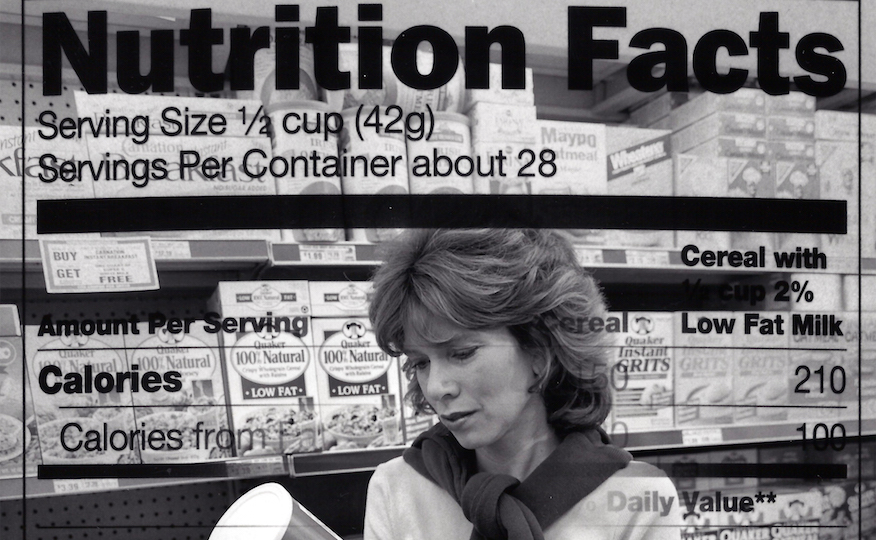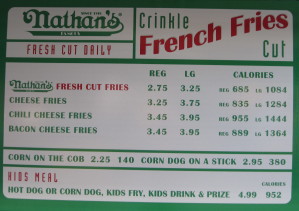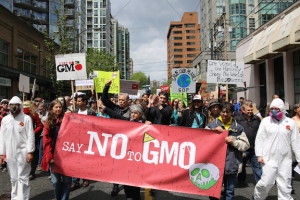
Few restaurateurs and even fewer consumers know about the behind-the-scenes battles that affect food labeling.
From the calorie count of your morning coffee shop fix to the shrink-wrapped meat at the grocery store, interest groups are fighting to define what information consumers should have and why.
Two movements have held the food labeling spotlight in recent years – those in favor of adding calorie counts to menus, and those who want labels on genetically modified food (GMOs). One movement has been successful, the other less so, and the reasons why might surprise you.
Food Labeling Legislation
Calorie Counts
Calorie count laws compel chain restaurants and other places that serve food to display the estimated caloric total for each menu item. These requirements, which are designed to ‘nudge’ consumers toward more health-conscious choices, were first put in place in New York in 2008, and California followed suit shortly thereafter.
Most of the protests against calorie labeling were not against the principle itself, but who should be subject to it. Locations where food preparation was not the primary service provided, like grocery store delis, claimed that the regulations would be too difficult to fulfill and result in less fresh choices for customers.
 These arguments proved unpersuasive to the Food and Drug Administration, as the new federal laws encompass a wider range of establishments than any of the state laws currently in place.
These arguments proved unpersuasive to the Food and Drug Administration, as the new federal laws encompass a wider range of establishments than any of the state laws currently in place.
In November 2014, the FDA announced that restaurants with 20 or more locations – including coffee shops and pizza deliveries – as well as bakeries, convenience stores, amusement parks and vending machines would be required to post caloric content “clearly and conspicuously” for customers on their menus and displays.
Since RTG is based in California, we got used to seeing calorie counts on menus a while ago, but restaurants nationwide are expected to be in compliance by November 2015. Some large chain restaurants, including McDonald’s and Panera Bread, started adding calorie counts to their menus before the new laws passed.
Whether or not the additional information helps consumers make more health-conscious choices is up for debate. A 2011 Stanford study that tracked consumer behavior at New York Starbucks locations with calories displayed found only a 6% decrease in calories per transaction.
Questions of effectiveness aside, calorie displays are now the law of the land, and restaurateurs will have to incorporate them into their menus for the time being. (As long as you’re making changes to your menu, check out our post on menu engineering best practices.)
GMO Labeling
Adding calorie counts to menus was a quick success for policy advocates. Those in favor of labeling genetically modified food (GMO), however, have found themselves on a much longer and more difficult road.
 Foods that are genetically modified – to better withstand pesticides, for example, or produce enzymes to fight off bugs – have been around for decades at least, and science has yet to discover any health risks related to GMO, or any notable differences between GMO and non-GMO products.
Foods that are genetically modified – to better withstand pesticides, for example, or produce enzymes to fight off bugs – have been around for decades at least, and science has yet to discover any health risks related to GMO, or any notable differences between GMO and non-GMO products.
Advocates of GMO labeling claim that they have the right to know what is in their food. The Boston Globe took issue with this position in an August 3 editorial, however, claiming that the labels have no place next to standard nutrition information:
“Unlike calorie counts or allergen warnings … whether or not a food has come from a genetically modified source has no relationship to its health or safety. States that have mandated [GMO labeling] next to legitimate health information are piggybacking on the credibility of food labels to imply that genetically modified foods are also a health or nutrition factor — which study after study has shown is not the case.”
The reason calorie counts have succeeded and GMO labeling has failed can be traced back to that first sentence. Calorie counts seek to label food as it is, for better or worse. GMO labeling would imply that the food is tainted by modification – which has not been proven, despite public outcries to the contrary.
The failure to label GMO foods at a regulatory level hasn’t stopped some companies from doing it themselves, however. Chipotle announced a no-GMO policy in the spring, and other brands are cautiously reducing their GMO offerings to ward off a consumer backlash. The science behind labeling genetically modified foods may not be settled, but the battle of public opinion is certain to continue.
